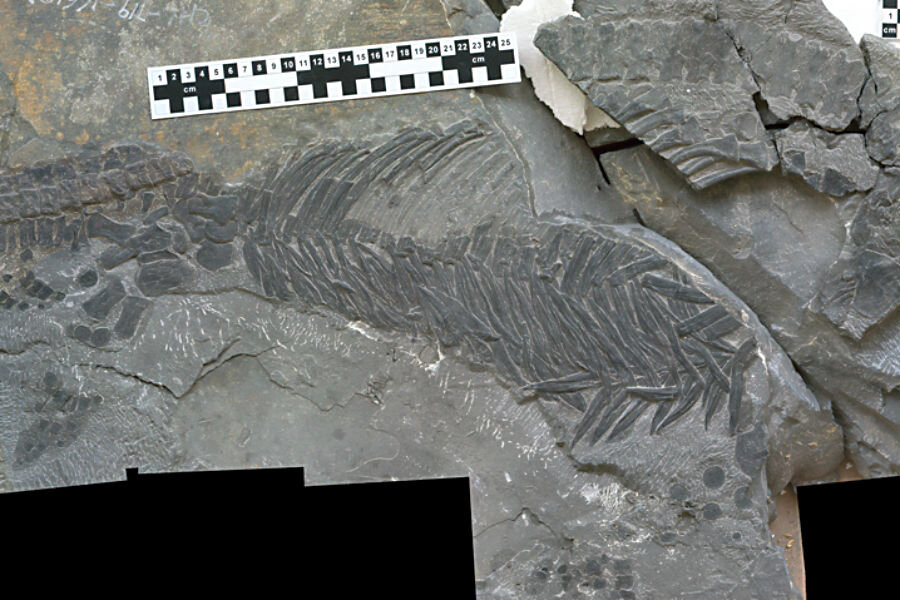Weird dolphin-like fossil suggests reptiles evolved quicker than we thought
Loading...
A new study reveals that early marine reptiles may have evolved faster than previously thought.
The evolution of ichthyosaurs, marine reptiles that superficially resembled modern-day dolphins, has remained elusive to scientists, and a theory that has long been accepted suggested that the evolution was a slow, gradual process. But the discovery of a new fossil – Sclerocormus parviceps – now casts doubts into the theory.
The new study, published Monday in Scientific Reports, suggested that ichthyosaurs and their relatives, which emerged in the Triassic period about 250 million years ago after a global mass extinction that killed off 96 percent of all marine species, evolved and diversified rapidly within the first one million years of their evolution.
Most known ichthyosaur species had streamlined bodies, long beak-like snouts, and powerful tails with triangular flukes. But Sclerocormus, breaks all the rules of what a ichthyosaur is supposed to look like. The species is larger than coeval marine reptiles and has a short snout and a long whip-like tail without fins at the end. And unlike other ichthyosaurs, which had conical teeth for capturing their preys, Sclerocormus was toothless and appears to have used its short snout to suck up food like a syringe.
“What this suggests is that ichthyosaurs were more diverse than previously thought,” said Olivier Rieppel, the Field Museum’s Rowe Family Curator of Evolutionary Biology, in a telephone interview with the Christian Science Monitor.
It’s hard to tell how diverse the species were because there are few sites available for study. But given the diversity of the fossils discovered in South China, Dr. Rieppel says, the suspicion is that there could be more diverse species that haven’t been discovered yet.
“Not only is there more diversity in the late lower Triassic as documented now, but the interesting thing is in this later lower Triassic, you have these ichthyosauriforms, these early ichthyosaur animals of which Sclerocormus is one," Rieppel tells the Monitor. “But between the lower and middle Triassic, there seems to have been a bottleneck and these early ichthyosauriforms disappeared from the fossil records. And then in the middle Triassic, real ichthyosaurs kick in and had to go through rapid diversification."
"So it’s a process of rapid diversification, bottleneck, and radiation diversification, at the turn of the Triassic, and that pattern had not been recognized before.”
The hunt for more specimens continues, Rieppel says, but the discovery is very predictive to scientists given the mass extinction that we are going through right now.
“We’re in a mass extinction right now, not one caused by volcanoes or meteorites, but by humans,” said Rieppel in a statement. “So while the extinction 250 million years ago won’t tell us how to solve what’s going on today, it does bear on the evolutionary theory at work. How do we understand the recovery and rebuilding of a food chain, of an ecosystem? How does that get fixed, and what comes first?”








